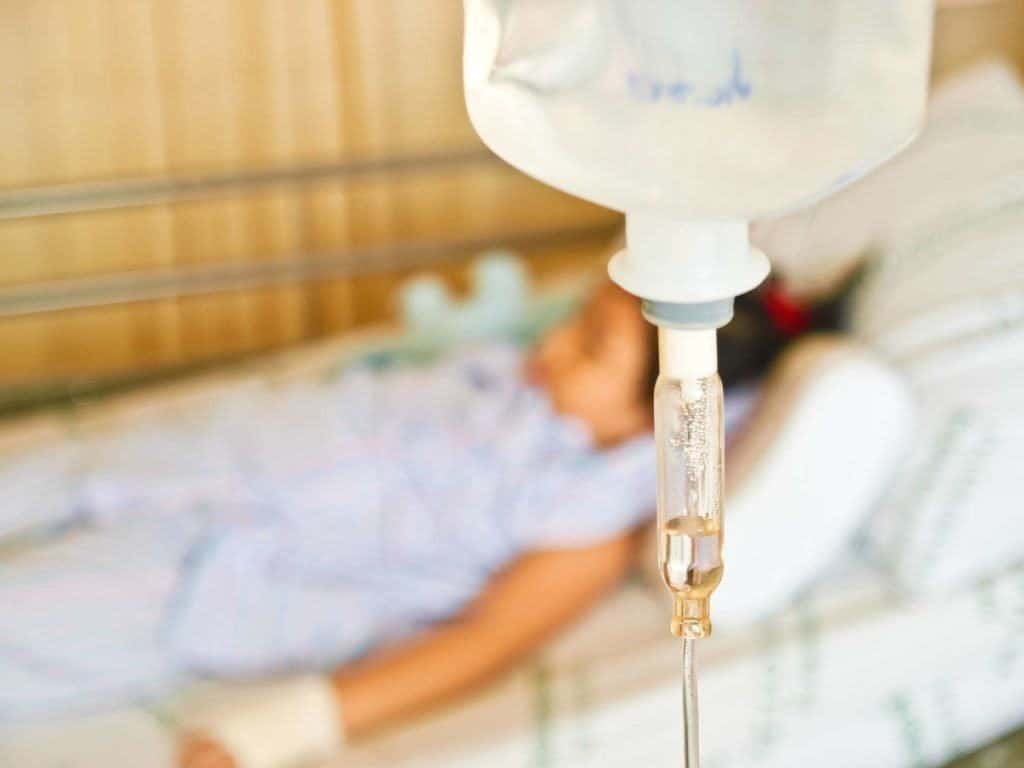Contents:
- Blood clots are the most common cause of stroke in children
- Blood vessel
- Arterial ischemic stroke (AIS)
- Signs of symptoms of AIS
- Signs of AIS symptoms in children, adolescents and adults
- Signs of AIS symptoms in infants
- Possible causes of AIS
- Treating AIS
- Therapy for stroke
- AIS can happen again
- General stroke test in children
- Blood test
- Cerebral angiogram
- Computed tomography (CT) Scan
- Magnetic resonance imaging (MRI)
- Echocardiogram
- Lumbar puncture
Arteries and veins are called blood vessels. They carry blood, oxygen, and nutrients to all tissues in the body, including the brain. Blood is pushed through a vein with your heartbeat.
Stroke is a sudden blockage or damage in a blood vessel in the part of the brain. This condition stops the blood from flowing to parts of the brain, causing a lack of oxygen and other nutrients in the brain. This can cause some permanent damage and bodily functions do not work properly.
Stroke can occur in anyone at any age. Stroke occurs in infants, children, adolescents, as well as adults and seniors. The cause of stroke in children can be different in strokes experienced by adults.
Blood clots are the most common cause of stroke in children
Blood clots are the most common cause of stroke in children. Blood clots occur when liquid blood changes to a solid form. Some blood clots in the body are normal. But clots of blood trapped in blood vessels while moving through the body are not normal. If this happens in the brain, it can cause a stroke.
Stroke caused by a blood clot is called an ischemic stroke.
Blood vessel
Arteries and veins are both blood vessels in the body. Arteries carry blood from the heart to body tissues, including the brain. Veins carry blood from the body's tissues back to the heart.
Because there are two types of blood vessels, there are 2 types of ischemic strokes:
- Stroke caused by a blood clot in an artery called arterial ischemic stroke (AIS)
- Stroke caused by a blood clot in a blood vessel is called cerebral sinovenous thrombosis CSVT).
Arterial ischemic stroke (AIS)
AIS can occur due to one of the following:
- Blood clots form in the body and flow into the blood vessels in the brain and get trapped there. This situation is called embolism.
- Blood clots form directly in the arteries that supply blood to the brain. These blood clots inhibit blood flow in the arteries. This event is called thrombosis.
Blood clots block the blood supply to parts of the brain.
Signs of symptoms of AIS
Signs of AIS symptoms in children, adolescents and adults
Children, adolescents, and adults who experience strokes can suddenly show 1 or more of these signs:
- The face, arms, or legs feel weak or numb, usually on one side of the body
- Losing the ability to speak, having difficulty speaking or having difficulty understanding conversation
- Do not see clearly with one or both eyes
- Having severe headaches with or without vomiting
- Feeling very dizzy like the room 'spinning', losing balance, difficulty walking, or falling for no reason
Signs of AIS symptoms in infants
Babies can show subtle signs of stroke, like the following:
- Having seizures for no apparent reason
- Extreme difficulty to wake up during the day outside of normal sleep time
- Prefer to use only one side of the body when they grow in the first year after birth
Possible causes of AIS
About 4 out of 10 strokes occur in healthy children. Some children may have problems with their blood clotting system.
Other children may already have serious conditions that can cause strokes. These conditions include:
- Heart disease in which children are born with congenital heart abnormalities, or occur later such as rheumatic heart disease
- Heart or brain surgery
- Sickle cell anemia
- Leukemia
- Moya Moya's Disease
- System problems in body cells that convert food into energy, are called metabolic diseases
- Blood clotting disorders
- Serious infections, especially in the head and neck
- Migraine
- Accidents involving the head and neck
- Other trauma
Treating AIS
The main goal in the treatment of AIS is to reduce the damage that can occur due to stroke, and prevent other strokes from occurring.
Treatments include drugs called blood thinners, which help stop blood from forming clots. Your child may need one or more of the following blood thinners:
- Warfarin (Coumadin), given by mouth
- Heparin, given intravenously
- Low molecular weight heparin (LMWH), which is given by injection under the skin
- Acetylsalicylic acid (Aspirin or ASA), given by mouth
- Clopidogrel (Plavix), given by mouth
Therapy for stroke
After a stroke, some children may experience physical or mental difficulties. Rehabilitation therapy is very important to help children recover. Many different professional health treatments that can help your child, such as:
- physiotherapist
- occupational therapy
- pathological speech-language
- social worker
- neuropsychologist
AIS can happen again
There is a possibility that a stroke will occur again. This depends on:
- cause of stroke
- treatment options
- how well the treatment results
- your child's age. For example, a newborn who has a stroke is far less likely to experience a stroke again.
General stroke test in children
The doctor will do some or all of the following tests when a child has AIS.
Some of these are routine tests, which means they are done on many children throughout the hospital for various reasons. If you want to learn more about your child's individual tests, ask your health team for more information.
Over time, most of these tests will be repeated to see how well your child is developing.
Blood test
Blood tests help doctors better understand why your child has a stroke. Children who need blood thinners may also need to do some blood tests to see:
- how well they work
- if the dose needs to be changed
Cerebral angiogram
Cerebral angiogram is a detailed picture of brain arteries. Your child will do X-rays while special fluids are injected into the arteries. Coloring will make arteries appear on X-rays.
Computed tomography (CT) Scan
CT scans use X-rays to take detailed pictures of the affected area in the brain. This test can show these things:
- whether your child has had a stroke
- type of stroke
- which network has a stroke
Magnetic resonance imaging (MRI)
MRI is another way to take pictures of your child's brain without X-rays. This can display stroke information similar to CT scans but in more detail. MRI can show:
- if your child has a stroke
- when a stroke occurs
- how serious is the stroke
A magnetic resonance angiogram (MRA) works in the same way but looks more at arteries in the brain, not in brain tissue.
Echocardiogram
Echocardiograms use sound waves to take pictures of your child's heart.
Lumbar puncture
Lumbar puncture is also called a spinal tap. This test looks at signs of infection or inflammation in your child's nervous system.
If you have questions, please write them down so the doctor or nurse can answer them for you.












